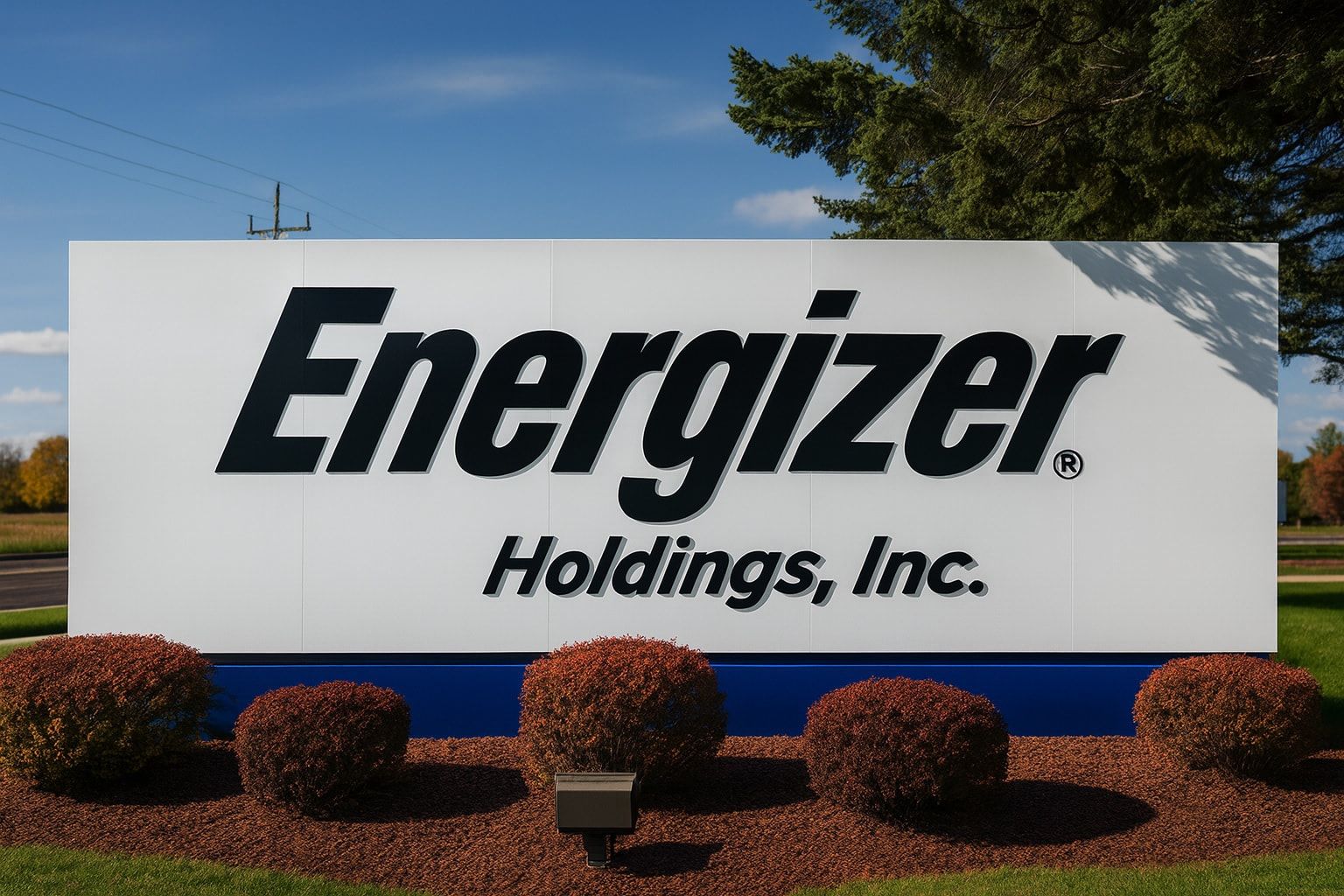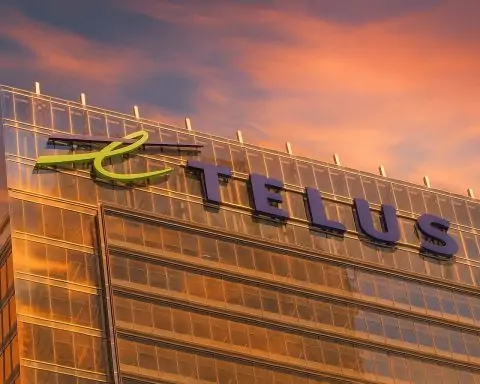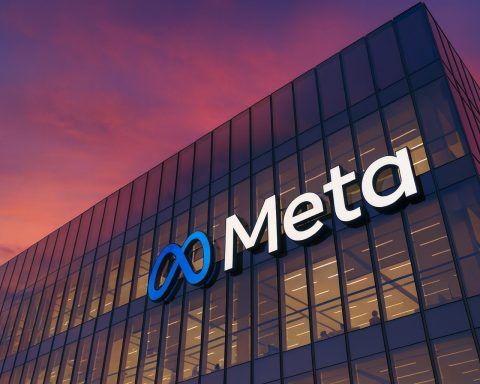Energizer Holdings, Inc. (NYSE: ENR) shares are under heavy pressure today after the battery and auto-care company reported fiscal fourth-quarter 2025 results that missed Wall Street profit expectations and issued a cautious earnings outlook for fiscal 2026, citing tariff headwinds and softer consumer demand. [1]
Around mid-morning, ENR was trading near $18.20, down roughly 23–24% on the day, wiping out hundreds of millions of dollars in market value in a single session. [2]
Key Takeaways for ENR Investors Today
- Q4 2025 revenue beat, earnings miss:
Fiscal Q4 net sales rose 3.4% to $832.8 million, slightly ahead of analyst expectations, but organic net sales fell 2.2% and adjusted EPS of $1.05 missed consensus estimates ranging from about $1.16–$1.17 per share. [3] - Full-year 2025 looks stronger on paper:
For the year ended September 30, 2025, Energizer posted net sales of $2.95 billion (+2.3%) and adjusted EPS of $3.52, up 6% year over year, helped by $120.9 million in production tax credits and cost savings from its multi-year “Project Momentum” program. [4] - Margins squeezed by tariffs and network changes:
Q4 adjusted gross margin slipped to 38.5% from 42.2% a year ago as tariff costs, production inefficiencies and integration of the acquired APS business weighed on profitability, despite pricing actions and savings initiatives. [5] - FY 2026 guidance disappoints:
Management expects flat to slightly up organic sales and adjusted EPS between $3.30 and $3.60 in fiscal 2026, implying little or no earnings growth versus 2025 at the midpoint and falling below prior analyst expectations. Q1 FY26 is expected to be particularly weak, with high-single-digit organic sales declines and EPS of just $0.20–$0.30. [6] - Stock crushed despite 5%+ dividend yield:
The board recently declared a $0.30 per-share quarterly dividend, or $1.20 annually, giving ENR a forward yield just above 5% at pre-selloff prices and even higher at today’s depressed levels. [7]
Q4 2025: Sales Up, Profits Down as Organic Demand Softens
Energizer’s fiscal fourth quarter, covering the period ended September 30, 2025, delivered a mixed message: revenue modestly exceeded expectations, but underlying demand and margins came under pressure. [8]
Headline Q4 numbers:
- Net sales: $832.8 million (up 3.4% year over year)
- Organic net sales:–2.2%, with the difference coming from acquisitions and currency
- Net earnings (GAAP): $34.9 million vs. $47.6 million a year ago
- GAAP EPS: $0.50 vs. $0.65 last year
- Adjusted EPS: $1.05 vs. $1.22 last year
- Adjusted EBITDA: $171.2 million vs. $187.3 million a year earlier [9]
The company explained that volumes fell 2.9%, driven mainly by softer consumer demand in North America, partially offset by growth in e‑commerce and international markets within its Batteries & Lights division and new innovation and expanded distribution in Auto Care. Pricing contributed a modest 0.7% uplift, helped by tariff-related price moves and innovation. [10]
Despite the top-line gain, profitability deteriorated:
- Reported gross margin fell to 36.6%, and
- Adjusted gross margin slid to 38.5%, down 370 basis points from the prior year quarter. [11]
Management attributed the margin compression to:
- higher product costs and production inefficiencies tied to rebalancing its manufacturing and logistics network,
- increased warehousing, distribution and tariff costs, and
- the lower-margin profile of the recently acquired APS auto-care business. [12]
These headwinds outweighed positive contributions from Project Momentum cost savings, production tax credits and targeted price increases.
From Wall Street’s perspective, the biggest issue was the earnings miss. Multiple data providers show adjusted EPS of $1.05 falling short of consensus:
- The Fly cites a consensus of $1.16,
- Investing.com cites $1.17, and
- Zacks/ Nasdaq calculates a –6.25% earnings surprise, with revenue only modestly ahead of forecasts. [13]
That combination—small revenue beat, meaningful EPS miss—set the stage for today’s sharp selloff.
Full-Year 2025: Cost Savings and Tax Credits Mask Underlying Pressures
On a full-year basis, Energizer’s numbers look more resilient, though they are flattered by one-time benefits.
For fiscal 2025, the company reported: [14]
- Net sales: $2.95 billion, up 2.3% from $2.89 billion in 2024
- Organic net sales growth:0.7%, with volume growth of 1.5% partially offset by lower pricing
- GAAP EPS:$3.32, up sharply from $0.52, largely due to the absence of prior-year impairment charges and the recognition of production tax credits
- Adjusted EPS:$3.52, up 6% from $3.32
- Net earnings: $239.0 million
- Adjusted EBITDA: $623.6 million, up from $612.4 million
A major tailwind in 2025 was $120.9 million in production tax credits, which significantly boosted net earnings and supported adjusted EPS despite weaker organic demand and higher costs. [15]
Meanwhile, Project Momentum—Energizer’s multi-year cost savings program—has now delivered more than $200 million in cumulative savings over three years. The initiative generated roughly $50 million of savings in fiscal 2025 alone, helping offset higher input costs, tariffs and network transition expenses. Management is extending the program into a fourth year to maintain momentum on tariff mitigation, operational efficiency and APS integration. [16]
Still, some metrics under the surface are less comforting:
- Free cash flow for 2025 was just $63.2 million, or about 2.1% of net sales.
- SG&A expenses ticked up as a percentage of sales, driven by APS-related costs, digital transformation investments and higher legal and recycling fees, partially offset by Project Momentum savings. [17]
External analysts have also flagged Energizer’s leverage and weakening long-term growth record. GuruFocus, for example, estimates a debt-to-equity ratio near 19, an Altman Z-score of 1.41 (in the so‑called “distress zone”), and three‑year revenue growth of –3.3%, even as margins and EPS benefited from cost actions and credits. [18]
Fiscal 2026 Outlook: Tariffs and a Weak Q1 Weigh on Sentiment
The other major driver of today’s selloff is Energizer’s guidance for fiscal 2026, which came in below what many investors had hoped for.
Management now expects: [19]
- Organic net sales: flat to slightly up across both Batteries & Lights and Auto Care
- Adjusted gross margin: to decline modestly, as tariff impacts are only partly offset by pricing, production credits and productivity initiatives
- Adjusted EPS:$3.30–$3.60
- Adjusted EBITDA:$580–$610 million
At the midpoint, that guidance implies roughly flat earnings versus 2025’s $3.52 in adjusted EPS and a step down from 2025’s $623.6 million in adjusted EBITDA—despite ongoing cost savings. [20]
The earnings cadence is also a concern:
- In Q1 FY26, Energizer expects high-single-digit declines in organic net sales and adjusted EPS of just $0.20–$0.30, reflecting temporary tariff costs, tough comparisons and continued network rebalancing.
- Management does expect double-digit EPS growth over the balance of the year, but investors appear skeptical given the company’s recent history of margin pressure. [21]
Several outlets, including Zacks, GuruFocus and Seeking Alpha, have highlighted that Energizer’s 2026 sales and EPS ranges sit below prior Street consensus, reinforcing the perception that the company is resetting expectations lower in the face of tariff-related cost pressures and soft demand. [22]
ENR Stock Reaction: One of the Day’s Biggest Losers
The market’s response was swift and brutal.
According to ChartMill data, ENR traded around $18.22, down $5.64, or 23.6%, at about 10:16 a.m. ET, following the earnings release and guidance update. [23]
Other services also report steep declines:
- RTT News noted the stock was down sharply in pre-market trading as soon as results hit the tape. [24]
- Several recap pieces—on platforms like Investing.com, inkl and Finimize—frame the move as a classic reaction to a “revenue beat, earnings miss, weak guidance” setup under heavy tariff headwinds. [25]
The selloff has pushed ENR’s valuation to levels some value-oriented investors may find intriguing. GuruFocus, for instance, cites a trailing P/E ratio around 5.3 and a price-to-sales ratio of just 0.45, both near multi-year lows, while still flagging substantial balance-sheet risk and sluggish top-line growth. [26]
Adding to the pressure, The Fly reports that UBS and JPMorgan have trimmed their price targets on Energizer to $26 and $28, respectively, following the print—still implying upside from today’s price, but signaling reduced confidence in the near-term trajectory. [27]
Dividend and Capital Allocation: Yield Is Up, Flexibility Still in Question
On November 10, just ahead of the earnings release, Energizer’s board declared a quarterly dividend of $0.30 per share, payable on December 10, 2025, to shareholders of record as of November 25, 2025. That continues an annualized dividend of $1.20 per share. [28]
Yahoo Finance data indicate that, before today’s plunge, that payout equated to a forward dividend yield of about 5.0%. At today’s lower share price, the yield is materially higher, though the market appears increasingly focused on the company’s ability to sustain and grow that dividend given its leverage and constrained free cash flow. [29]
Energizer is also continuing to return capital via buybacks and manage its debt profile:
- The company repurchased 1.2 million shares in Q4 at an average price of about $22.49, and 4.0 million shares in fiscal 2025 at roughly $22.42.
- It refinanced $500 million of existing debt, redeeming 6.50% notes due 2027 and restoring revolver capacity.
- After year-end, Energizer applied a $50.7 million tax refund and other cash to pay down about $80 million of debt. [30]
These steps show an ongoing commitment to shareholder returns, but they also underline the trade-off between dividends, buybacks and deleveraging at a time when free cash flow is tight and tariffs are pressuring margins.
How Today’s Coverage Frames the ENR Story
Financial media and research platforms are largely aligned in their interpretation of today’s announcement:
- StockTitan / PRNewswire emphasize the headline numbers: moderate full-year sales growth, a 6% increase in adjusted EPS to $3.52, and 2026 guidance that assumes flat-to-slightly higher organic sales and EPS of $3.30–$3.60. [31]
- Zacks (via Nasdaq) and RTT News focus on the earnings miss, organic sales decline and the stock’s slide following the release. [32]
- Seeking Alpha and inkl highlight tariff headwinds, weaker guidance and the resulting negative investor sentiment. [33]
- Finimize zooms out to the sector level, noting that Energizer’s margin struggles mirror broader global manufacturing challenges amid higher input costs and persistent trade frictions. [34]
- MarketScreener has published management’s prepared remarks, providing additional color on strategy, Project Momentum and tariff mitigation efforts. [35]
The consensus narrative: Energizer executed reasonably well in 2025 on cost and cash initiatives, but its underlying demand trends and 2026 outlook are too soft to satisfy a market already nervous about tariffs and slowing consumer categories.
What to Watch Next
For investors and observers following Energizer Holdings (ENR) after today’s selloff, several questions will likely drive the stock’s next moves:
- Tariff trajectory and mitigation:
How quickly can Energizer offset higher tariff costs through pricing, supply-chain changes and production credits—and are there further tariff shocks to come? - Organic growth in Batteries & Lights vs. Auto Care:
Can innovations and expanded distribution in Auto Care and international markets offset softer battery demand in North America? - Project Momentum execution:
With the cost program extended into a fourth year, is there still meaningful “low-hanging fruit,” or will incremental savings become harder to capture? - Deleveraging and free cash flow:
Will management prioritize debt reduction over buybacks in 2026, particularly if macro conditions remain choppy? - Dividend sustainability:
The yield is attractive, but with modest growth and a levered balance sheet, investors will be closely monitoring payout coverage ratios.
As always, this article is for informational purposes only and does not constitute investment advice or a recommendation to buy or sell any security. Investors should conduct their own research or consult a qualified financial advisor before making investment decisions.
References
1. www.prnewswire.com, 2. www.chartmill.com, 3. www.prnewswire.com, 4. www.prnewswire.com, 5. www.prnewswire.com, 6. www.prnewswire.com, 7. investors.energizerholdings.com, 8. www.prnewswire.com, 9. www.prnewswire.com, 10. www.prnewswire.com, 11. www.prnewswire.com, 12. www.prnewswire.com, 13. www.tipranks.com, 14. www.prnewswire.com, 15. www.prnewswire.com, 16. www.prnewswire.com, 17. www.prnewswire.com, 18. www.gurufocus.com, 19. www.prnewswire.com, 20. www.prnewswire.com, 21. www.prnewswire.com, 22. www.gurufocus.com, 23. www.chartmill.com, 24. www.rttnews.com, 25. www.inkl.com, 26. www.gurufocus.com, 27. www.tipranks.com, 28. investors.energizerholdings.com, 29. finance.yahoo.com, 30. www.prnewswire.com, 31. www.stocktitan.net, 32. www.nasdaq.com, 33. seekingalpha.com, 34. finimize.com, 35. www.marketscreener.com







